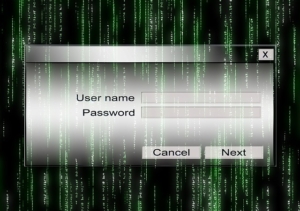Terror Social Media Marketing: The Grim Reality
Marketing war is nothing new, but the Islamic State of Iraq and Syria (ISIS), the Sunni militant group that seized Mosul, Iraq, last June, and already rules an area larger than the United Kingdom, is re-writing the war marketing rule book by deploying a sophisticated social-media strategy, which seems to be working. But why wouldn’t it? Are you really surprised that ISIS are good at digital media or that online communications is an integral creative cog of organised bloodshed?
If victory is the single most important product manufactured by military, then is has to be sold to citizens as taxpayers and consumers, and also as potential recruits. Similarly, like all large businesses, military organisations, need a public relations strategy to set the media agenda. Government defence departments have been recruiting PR people to sell the policy of war and control the language of war since PR began. Lately, viral marketing has been the preferred method, particularly video, but the US military was producing made to order propaganda videos, long before ISIS started to publish beheadings on social media – think of the Hollywood-esque rescue of the young, nineteen years old, attractive blonde Private Jessica Lynch from the evil clutches of the enemy during the Iraq war in 2003.
The ISIS film, Flames of War, runs just under an hour. It’s action packed and entertaining, complete with heroes, villains, and a linear plot. The camerawork is solid, the soundtrack rousing. It chronicles actual battles with ISIS’s enemies—the film culminates in the capture of a Syrian military base near the city of Ar Raqqah—with all the attendant blood and gore. Flames of War is not only a recruitment tool; it’s also a way for ISIS to establish a narrative about itself, now matter how aborehent.
 Marketing certainly affects the presentation of war, and video, whether on television or social media, cannot but turn war into a spectacle and a story. Likewise, war, and the atrocities committed as an act of it, is something of a must-see event, no matter what people’s views about its justice. Hence the ‘popularity’ of the ISIS murders, although it is not only video that is being used to market the Islamic State of Iraq and Syria.
Marketing certainly affects the presentation of war, and video, whether on television or social media, cannot but turn war into a spectacle and a story. Likewise, war, and the atrocities committed as an act of it, is something of a must-see event, no matter what people’s views about its justice. Hence the ‘popularity’ of the ISIS murders, although it is not only video that is being used to market the Islamic State of Iraq and Syria.
Dabiq, the slickly designed magazine online magazine used by ISIS for propaganda and recruitment, has a huge following and is highly influential in terms of promoting ‘strategic’ messages. In October last year, Dabiq published “The Revival of Slavery Before the Hour,” an article that took up the question of whether Yazidis (the members of an ancient Kurdish sect that borrows elements of Islam, and had come under attack from Islamic State forces in northern Iraq) are lapsed Muslims, and therefore marked for death. According to reports from Mosul, the article then went viral on social media, prompting a huge outpouring of renewed ‘passion’ for takfiri (excommunication) doctrine, for which ISIS is committed to purifying the world by killing vast numbers of people. Social-media posts from the region suggest that individual executions happen more or less continually, and mass executions every few weeks.
The fighters of the Islamic State may indeed be authentic throwbacks to early Islam and are faithfully reproducing its norms of war – slavery, crucifixion, beheadings and burnings – but they are using modern marketing techniques to bring it wholesale into the present day. ISIS’s ability to mix new-social media savvy with medieval savagery rivals the sophistication of corporate branding.
Their message is simply– ISIS is a revolutionary ideology and devout fighting force that is looking to massively disrupt the old social order (the ‘establishment’) and they have absolutely nailed the holy grail for many advertisers, which is to find ways of connecting to the next generation of young adults. ISIS is doing a good job of promoting the profiles of its teenage recruits, clearly encouraging them to publicise the ISIS brand through their Facebook accounts and other social media, using the marketing techniques of media monitoring… with the use of hashtags and clever, even if warped, videos making Twitter and other social media the perfect tools for the ISIS product.
Online voices have been essential to spreading propaganda and ensuring that newcomers know what to believe. Online recruitment has also widened the demographics of the jihadist community, by allowing conservative Muslim women—physically isolated in their homes—to reach out to recruiters, radicalise, and arrange passage to Syria. Tens of thousands of foreign Muslims are thought to have immigrated to the Islamic State. Recruits hail from France, the United Kingdom, Belgium, Germany, Holland, Australia, Indonesia, the United States, and many other places. Many have come to fight, and many intend to die. Through its appeals to both genders, the Islamic State hopes to build a complete society and the so-called “new spiritual authorities” are guiding foreigners to join ISIS through mainstream social channels.
The Islamic State’s ambitions and rough strategic blueprints were evident in social-media chatter as far back as 2011, when it was just one of many terrorist groups in Syria and Iraq and hadn’t yet committed mass atrocities. But what’s often overlooked is that ISIS doesn’t just have strong, organic support online. It also employs digital technology to control its message. One of ISIS’s more successful marketing tactics is an Arabic-language Twitter app called The Dawn of Glad Tidings, or just Dawn. The app, an official ISIS product promoted by its top users, is advertised as a way to keep up on the latest news about the jihadi group. Hundreds of users have signed up for the app on the web or on their Android phones through the Google Play store.
The app is just one way ISIS games Twitter to magnify its message. Another is the use of organised hashtag campaigns, in which the group enlists hundreds and sometimes thousands of activists to repetitively tweet hashtags at certain times of day so that they trend on the social network. This approach also skews the results of a popular Arabic Twitter account called @ActiveHashtags that tweets each day’s top trending tags. When ISIS gets its hashtag into the @ActiveHashtags stream, it results in an average of 72 retweets per tweet, which only makes the hashtag trend more. As it gains traction, more users are exposed to ISIS’s messaging. The group’s supporters also run accounts similar to @ActiveHashtags that exclusively feature jihadi content and can produce hundreds of retweets per tweet. ISIS uses hashtags with great effect to become more visible to potential recruits on social media
Think of Abu Rumaysah, a convert from Hinduism who evaded police to bring his family of five from London to Syria in November last year, and tweeted out a picture of himself with a Kalashnikov in one arm and his newborn son in the other. Hashtag: #GenerationKhilafah (meaning those who live under the self-declared caliphate, a form of Islamic government led by a caliph —a person considered a political and religious successor to the prophet Muhammad). God only knows how many young London Muslim’s packed a bag and headed off to join the fight after retweeting and favouriting the Rumaysah tweet.
As a result of these strategies, and others, ISIS is able to project strength and promote engagement online. For instance, the ISIS hashtag consistently outperforms that of the group’s main competitor in Syria, Jabhat al-Nusra, even though the two groups have a similar number of supporters online. ISIS also uses hashtags to focus-group messaging and branding concepts, much like a business might, and also generate divisive discussion, which they track and measure and analyse to help them plan future social media campaigns.
ISIS’s use of social media to spread pictures of graphic violence and attract new fighters, is only one component of marketing activities that are not only precisely calculated and coordinated, but are also supported by sophisticated online machinery.
In the article Making of the World’s Scariest Terrorist Brand by Marshall Sella writes: The James Foley video is impossible to watch with any degree of detachment… The first thing that draws your eye, naturally, is Foley’s prison-orange jumpsuit, and the perfect black of his captor’s own fitted clothing, including the perfect black balaclava that, in civilized society, long ago stopped being a ‘ski mask’. Almost immediately, British press dubbed this man ‘Jihadi John’. As he speaks in what seems to be an English accent; John looms tall over the journalist. His height is accentuated by the fact that we don’t immediately see Foley’s knees, so there is the momentary illusion that John is some sort of giant… John’s hands rest at his side; his stance is wide. He is calm and mostly still. He appears to be left-handed, holding a small blade. There are leather straps slung over each shoulder, and the exact purpose unknown. His head is cocked at a 9-degree angle, to convey defiance and contempt… Foley reads his lines clearly, in an almost lilting cadence…
In an article called ISIS– Art of Terror Social Media Marketing, BizShifts reports: This is theater; and there is no way of knowing how many takes this film required – or what mind-bending threats were quietly mentioned to the actor in order to help realise the auteur vision… All this while, at the upper left corner of the screen, we see the ISIS flag. The now-familiar square black-and-white banner, which has its origins in the eighth century… Yet, for the first time, on the videos, we see that the banner logo is ‘waving’; it’s animated… That seems like a small thing, but this is no amateurish video– ISIS used three cameras as in a television drama… The colour scheme in the Jihadi John videos is no small matter; that shade of orange in modern usage is often connected with the notion of ‘safety’, and it’s mainly prized for its ease of visibility. The colour orange is symbolic in many culture, e.g.; Buddhists associate orange with enlightenment; in the 21st-century West it’s the colour of traffic cones, life jackets, even the airliners ‘black box’… its symbolism is used to ward off danger. And, ISIS is using the colour orange to declare the ‘end of safety’, to usher in a new authority on what is visible and what is not. They’re are obliterating a modern colour on their quest to restore many of the ancient ones…

According to Steven Heller, the American art director and author; the use of symbols is not new, e.g.; Hitler used the swastika, Mussolini the black shirts… and when it comes to ISIS, there is less accident than meets the eye… now if you call yourself a ‘state’, or a terrorist organisation, then this is what you do: ISIS knows and understands symbolism, e.g.; it dresses its people in black, and includes their flag in the video… They are astute social media marketing people, and they certainly are not idiots…
ISIS’s strength certainly lies in the recognition of its brand, reach of its network, and its capacity to boost its Twitter presence through a combination of carefully crafted ‘official’ messages, as well as the buzz and volume of fans sharing content across the globe…The journalist Alice Speri wrote: And, whether or not their social media presence is exactly reflective of their numbers and power, ISIS have commandeered a great deal of online space. There are different types of ISIS divisions on social media: the ISIS official media account, which publishes all its video releases, ISIS province accounts, which publish live feed info and pictures, the ISIS mujahideen accounts, where fighters talk about their experience and daily life, and ISIS supporters who according to them counter Western, Shia… propaganda and lie.
What ISIS are doing, and doing well, is controlling their ‘central’ messaging using social media marketing with diversity of voices. No other militant group has deployed twenty-first-century PR techniques as effectively as ISIS. It uses proven formulas, sticks to what gets attention, employs a variety of platforms, and changes strategies to sustain audience interest.
We should hate what they are doing, we really should, but to interpret ISIS’s marketing and media efforts as anything less than unprecedented would be to grossly underestimate their marketing project: building a nation-state in real time.
About the author: Phil Shirley

“Phil Shirley is a marketing entrepreneur who helps ambitious growing businesses make their marketing pay. He has helped over 500 businesses make more than £500 million. Phil is also an experienced copywriter, ex-journaist and author of several successful books.”




Trackbacks & Pingbacks
[…] yesterday we were all chatting about “that” new social network called Facebook. We asked […]
Comments are closed.